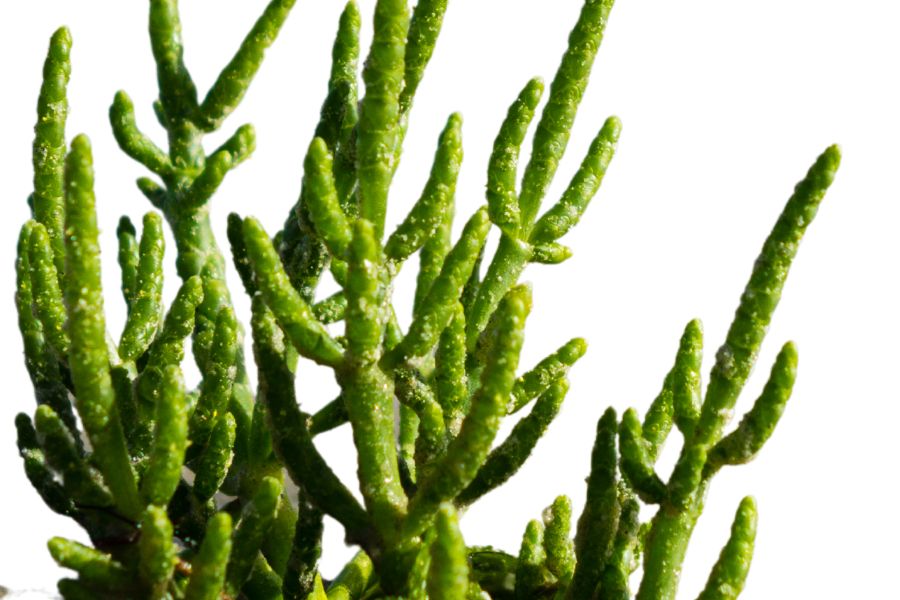Rhode Island might be our smallest state, but it offers big opportunities for foraging enthusiasts. The state’s diverse landscapes hide many edible treasures throughout the year. These natural foods are free for those who know where to look.
The coastal areas, woodlands, and meadows each support different types of wild foods. Mushrooms grow in damp forests while beach plums thrive near sandy shores. Seasonal changes bring new foraging opportunities every few months.
Local knowledge matters when hunting for wild edibles in Rhode Island. What grows abundantly in South County might be scarce in Providence. The best foraging spots change with weather patterns and seasons.
Some of Rhode Island’s best edible plants blend in with the landscape so well that even seasoned hikers miss them. But foragers who know what to look for can turn an ordinary walk into a day’s worth of rare ingredients. The more closely you look, the more valuable wild foods you’re likely to find.
What We Cover In This Article:
- What Makes Foreageables Valuable
- Foraging Mistakes That Cost You Big Bucks
- The Most Valuable Forageables in the State
- Where to Find Valuable Forageables in the State
- When to Forage for Maximum Value
- The extensive local experience and understanding of our team
- Input from multiple local foragers and foraging groups
- The accessibility of the various locations
- Safety and potential hazards when collecting
- Private and public locations
- A desire to include locations for both experienced foragers and those who are just starting out
Using these weights we think we’ve put together the best list out there for just about any forager to be successful!
A Quick Reminder
Before we get into the specifics about where and how to find these plants and mushrooms, we want to be clear that before ingesting any wild plant or mushroom, it should be identified with 100% certainty as edible by someone qualified and experienced in mushroom and plant identification, such as a professional mycologist or an expert forager. Misidentification can lead to serious illness or death.
All plants and mushrooms have the potential to cause severe adverse reactions in certain individuals, even death. If you are consuming wild foragables, it is crucial to cook them thoroughly and properly and only eat a small portion to test for personal tolerance. Some people may have allergies or sensitivities to specific mushrooms and plants, even if they are considered safe for others.
The information provided in this article is for general informational and educational purposes only. Foraging involves inherent risks.
What Makes Foreageables Valuable
Some wild plants, mushrooms, and natural ingredients can be surprisingly valuable. Whether you’re selling them or using them at home, their worth often comes down to a few key things:
The Scarcer the Plant, the Higher the Demand
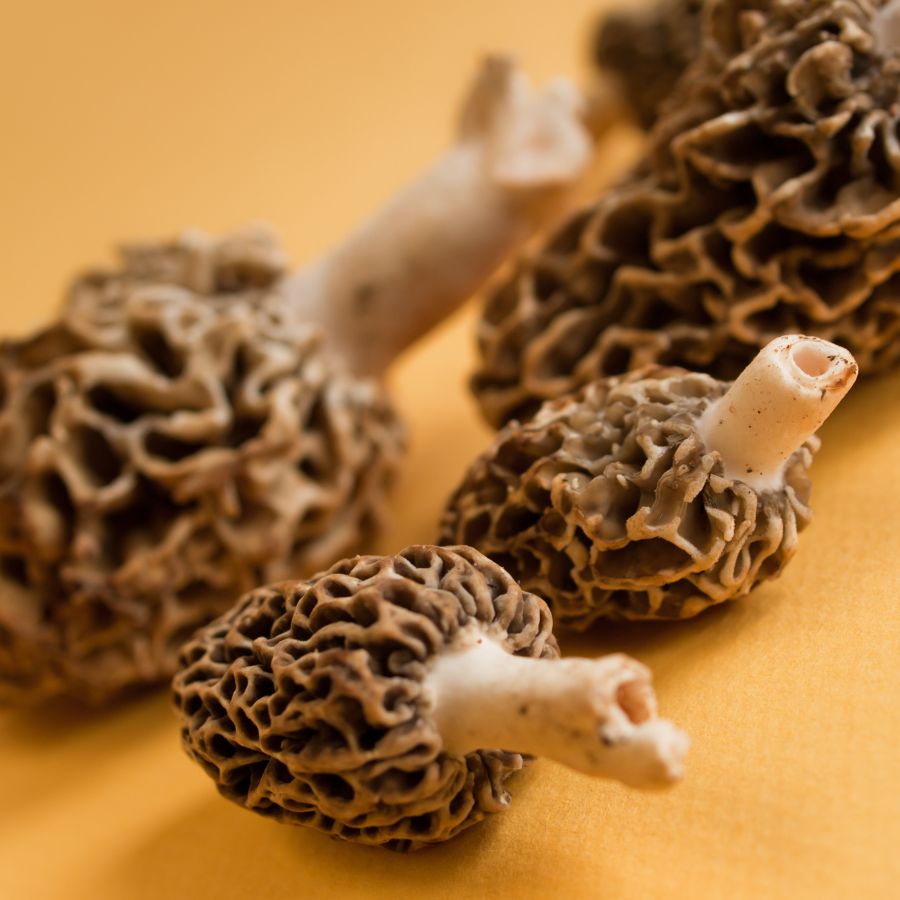
Some valuable forageables only show up for a short time each year, grow in hard-to-reach areas, or are very difficult to cultivate. That kind of rarity makes them harder to find and more expensive to buy.
Morels, truffles, and ramps are all good examples of this. They’re popular, but limited access and short growing seasons mean people are often willing to pay more.
A good seasonal foods guide can help you keep track of when high-value items appear.
High-End Dishes Boost the Value of Ingredients
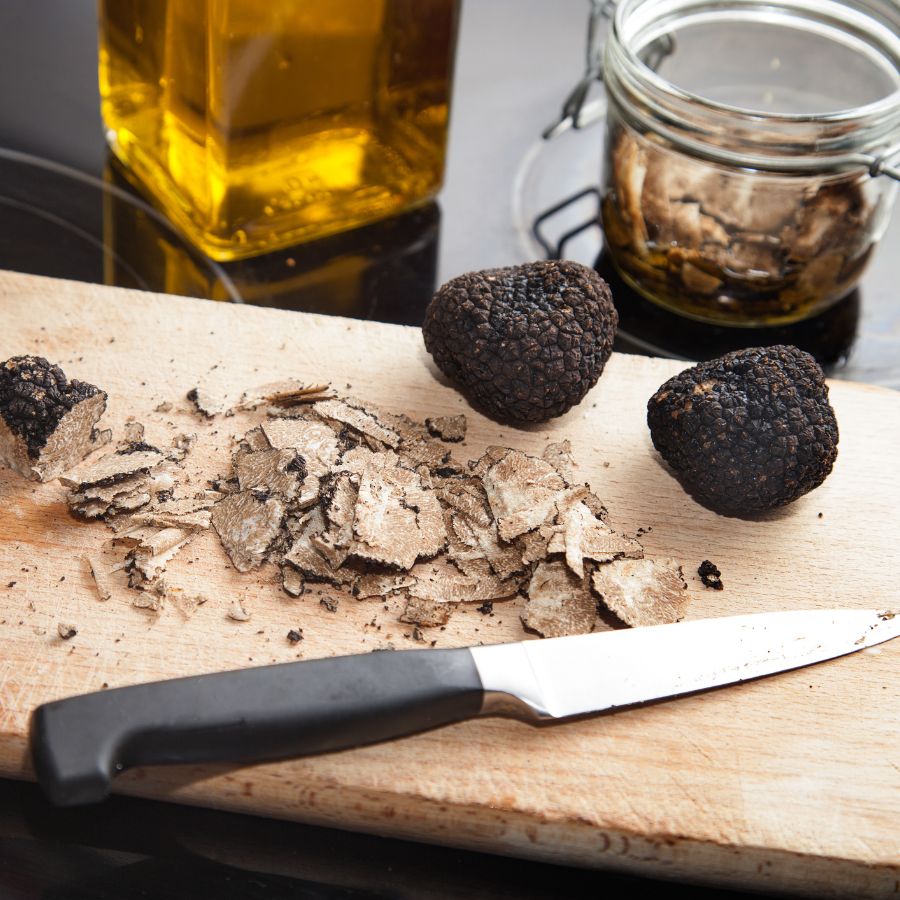
Wild ingredients that are hard to find in stores often catch the attention of chefs and home cooks. When something unique adds flavor or flair to a dish, it quickly becomes more valuable.
Truffles, wild leeks, and edible flowers are prized for how they taste and look on a plate. As more people try to include them in special meals, the demand—and the price—tends to rise.
You’ll find many of these among easy-to-identify wild mushrooms or herbs featured in fine dining.
Medicinal and Practical Uses Drive Forageable Prices Up
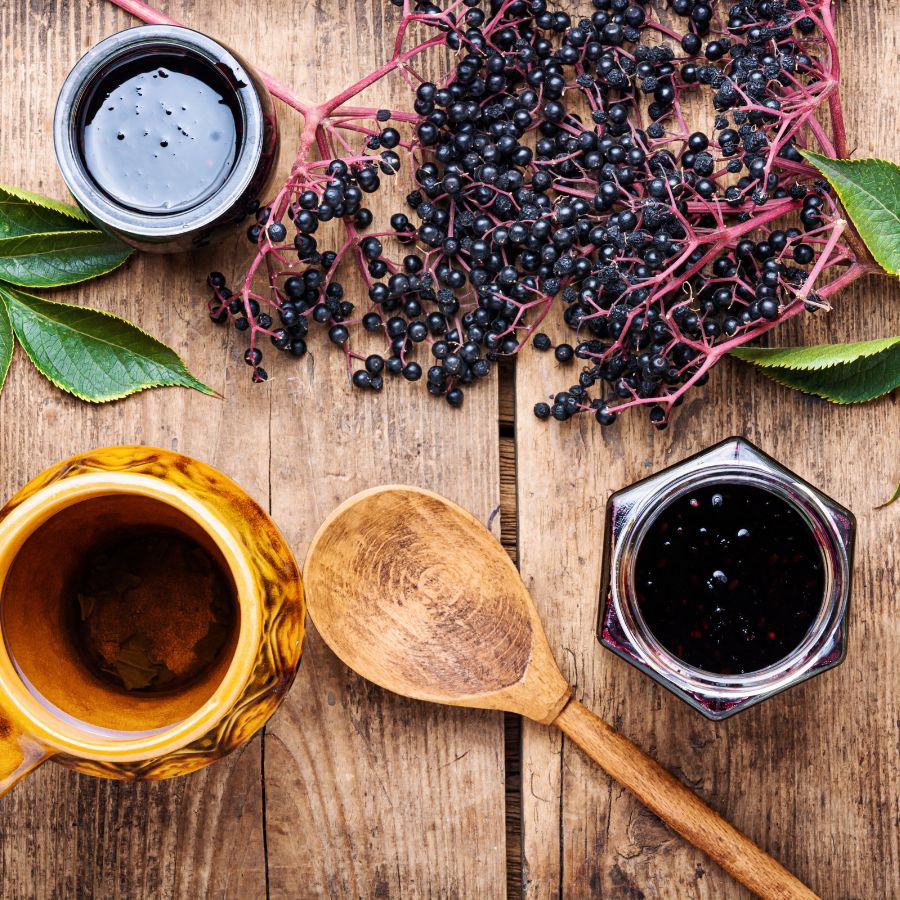
Plants like ginseng, goldenseal, and elderberries are often used in teas, tinctures, and home remedies. Their value comes from how they support wellness and are used repeatedly over time.
These plants are not just ingredients for cooking. Because people turn to them for ongoing use, the demand stays steady and the price stays high.
The More Work It Takes to Harvest, the More It’s Worth
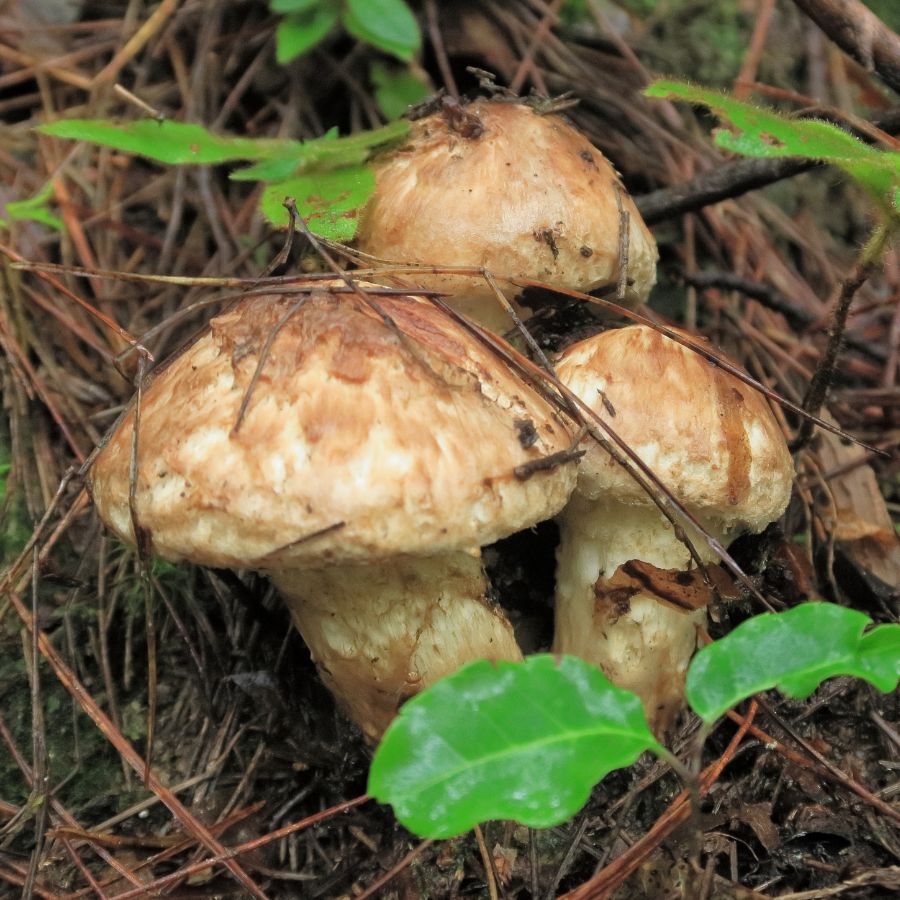
Forageables that are hard to reach or tricky to harvest often end up being more valuable. Some grow in dense forests, need careful digging, or have to be cleaned and prepared before use.
Matsutake mushrooms are a good example, because they grow in specific forest conditions and are hard to spot under layers of leaf litter. Wild ginger and black walnuts, meanwhile, both require extra steps for cleaning and preparation before they can be used or sold.
All of that takes time, effort, and experience. When something takes real work to gather safely, buyers are usually willing to pay more for it.
Foods That Keep Well Are More Valuable to Buyers
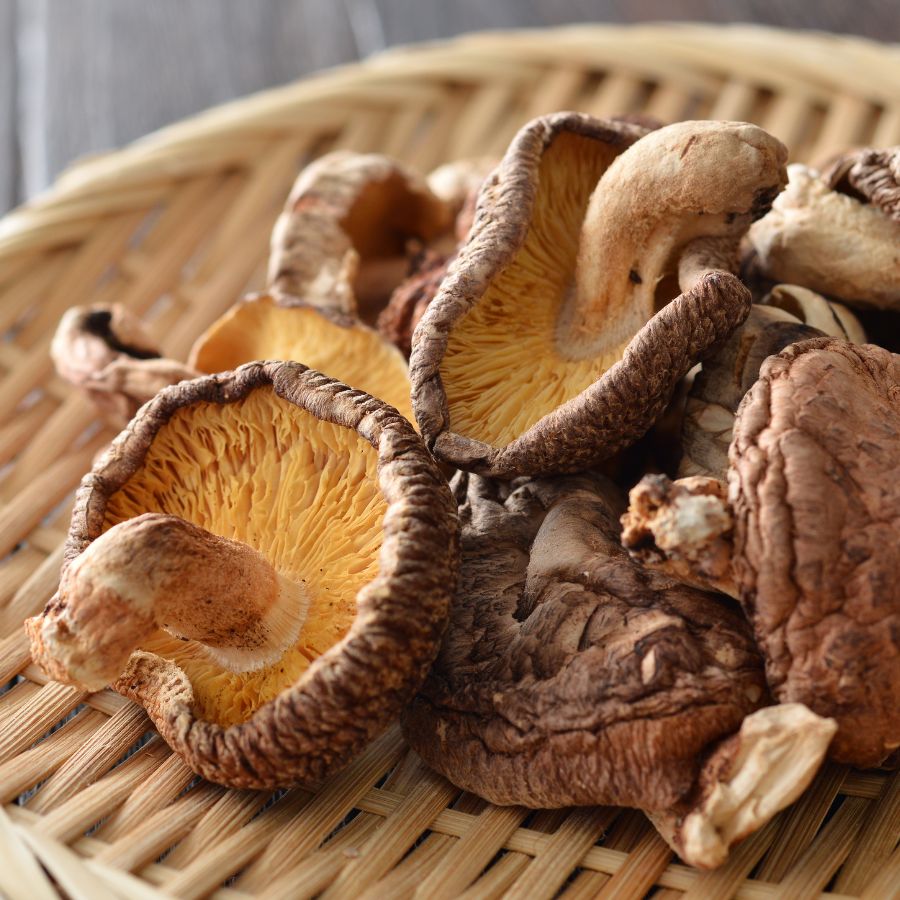
Some forageables, like dried morels or elderberries, can be stored for months without losing their value. These longer-lasting items are easier to sell and often bring in more money over time.
Others, like wild greens or edible flowers, have a short shelf life and need to be used quickly. Many easy-to-identify wild greens and herbs are best when fresh, but can be dried or preserved to extend their usefulness.
A Quick Reminder
Before we get into the specifics about where and how to find these mushrooms, we want to be clear that before ingesting any wild mushroom, it should be identified with 100% certainty as edible by someone qualified and experienced in mushroom identification, such as a professional mycologist or an expert forager. Misidentification of mushrooms can lead to serious illness or death.
All mushrooms have the potential to cause severe adverse reactions in certain individuals, even death. If you are consuming mushrooms, it is crucial to cook them thoroughly and properly and only eat a small portion to test for personal tolerance. Some people may have allergies or sensitivities to specific mushrooms, even if they are considered safe for others.
The information provided in this article is for general informational and educational purposes only. Foraging for wild mushrooms involves inherent risks.
Foraging Mistakes That Cost You Big Bucks
When you’re foraging for high-value plants, mushrooms, or other wild ingredients, every decision matters. Whether you’re selling at a farmers market or stocking your own pantry, simple mistakes can make your harvest less valuable or even completely worthless.
Harvesting at the Wrong Time
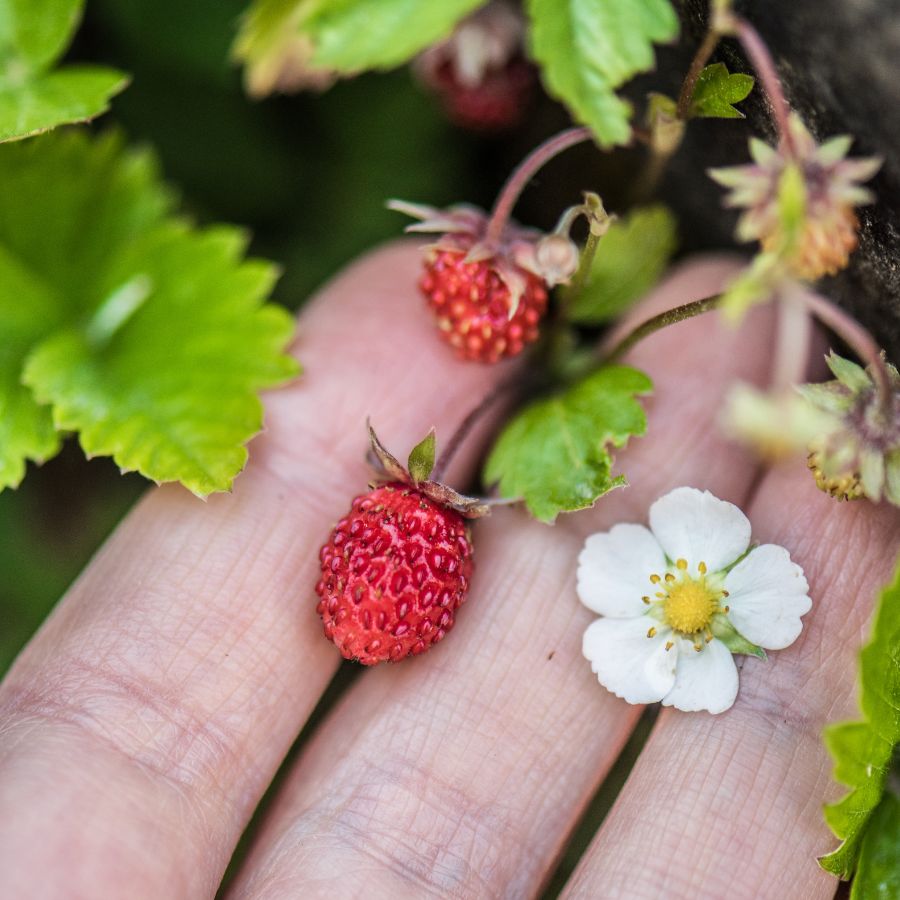
Harvesting at the wrong time can turn a valuable find into something no one wants. Plants and mushrooms have a short window when they’re at their best, and missing it means losing quality.
Morels, for example, shrink and dry out quickly once they mature, which lowers their weight and price. Overripe berries bruise in the basket and spoil fast, making them hard to store or sell.
Improper Handling After Harvest
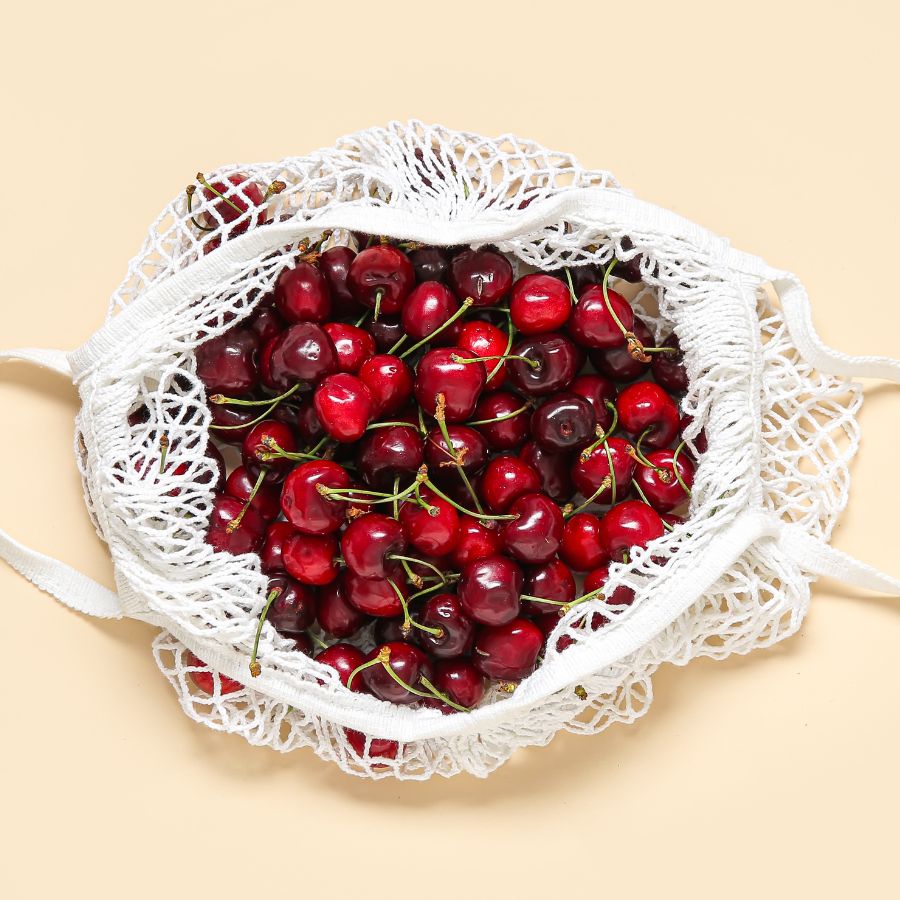
Rough handling can ruin even the most valuable forageables. Crushed mushrooms, wilted greens, and dirty roots lose both their appeal and their price.
Use baskets or mesh bags to keep things from getting smashed and let air circulate. Keeping everything cool and clean helps your harvest stay fresh and look better for longer.
This is especially important for delicate items like wild roots and tubers that need to stay clean and intact.
Skipping Processing Steps
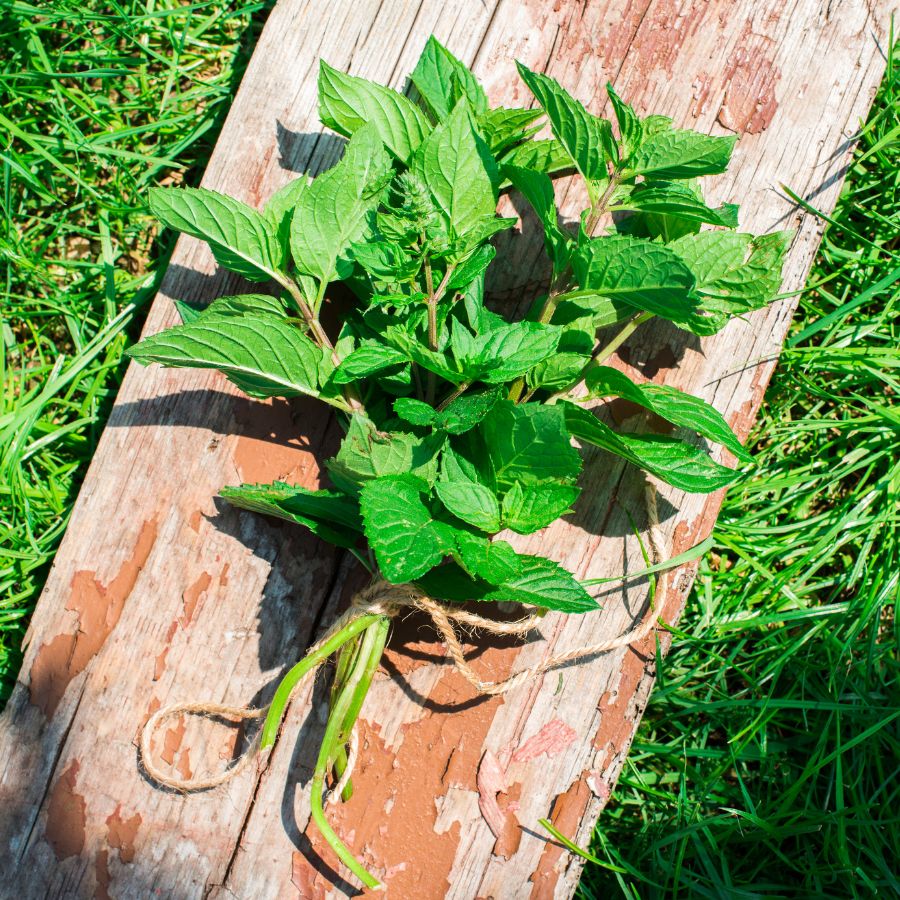
Skipping basic processing steps can cost you money. A raw harvest may look messy, spoil faster, or be harder to use.
For example, chaga is much more valuable when dried and cut properly. Herbs like wild mint or nettle often sell better when bundled neatly or partially dried. If you skip these steps, you may end up with something that looks unappealing or spoils quickly.
Collecting from the Wrong Area
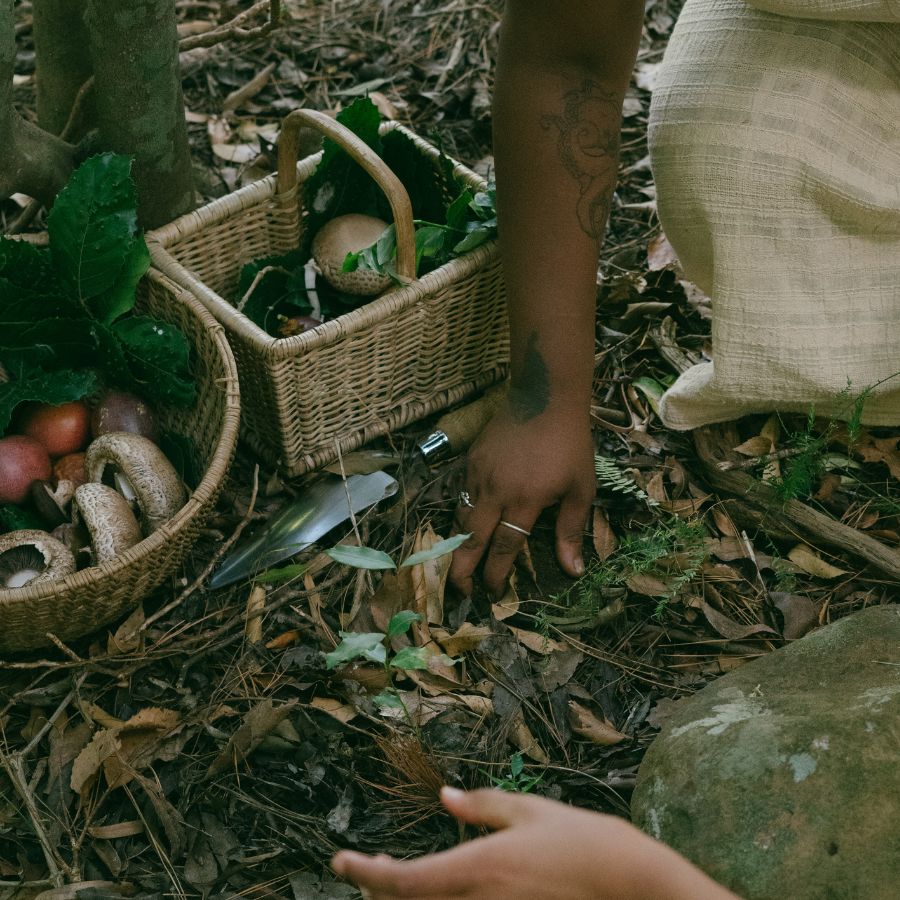
Harvesting in the wrong place can ruin a good find. Plants and mushrooms pulled from roadsides or polluted ground may be unsafe, no matter how fresh they look.
Buyers want to know their food comes from clean, responsible sources. If a spot is known for overharvesting or damage, it can make the whole batch less appealing.
These suburbia foraging tips can help you find overlooked spots that are surprisingly safe and productive.
Not Knowing the Market
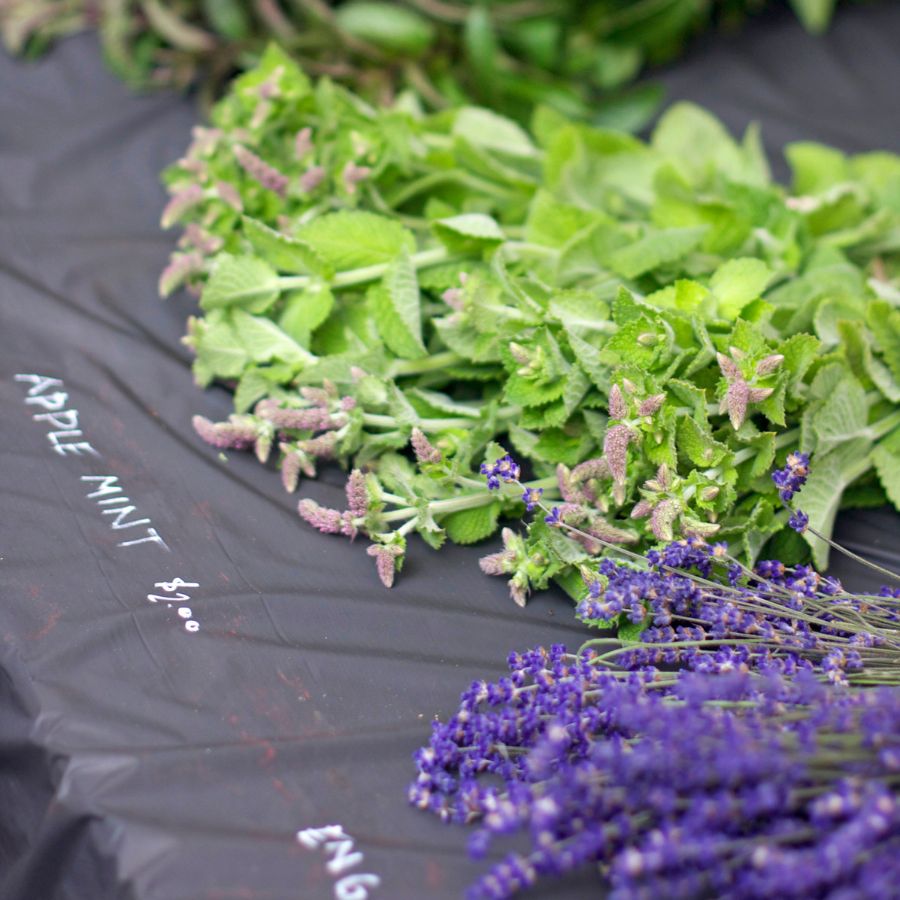
A rare plant isn’t valuable if nobody wants to buy it. If you gather in-demand species like wild ramps or black trumpets, you’re more likely to make a profit. Pay attention to what chefs, herbalists, or vendors are actually looking for.
Foraging with no plan leads to wasted effort and unsold stock. Keeping up with demand helps you bring home a profit instead of a pile of leftovers.
You can also brush up on foraging for survival strategies to identify the most versatile and useful wild foods.
Before you head out
Before embarking on any foraging activities, it is essential to understand and follow local laws and guidelines. Always confirm that you have permission to access any land and obtain permission from landowners if you are foraging on private property. Trespassing or foraging without permission is illegal and disrespectful.
For public lands, familiarize yourself with the foraging regulations, as some areas may restrict or prohibit the collection of mushrooms or other wild foods. These regulations and laws are frequently changing so always verify them before heading out to hunt. What we have listed below may be out of date and inaccurate as a result.
The Most Valuable Forageables in the State
Some of the most sought-after wild plants and fungi here can be surprisingly valuable. Whether you’re foraging for profit or personal use, these are the ones worth paying attention to:
Samphire (Salicornia europaea)
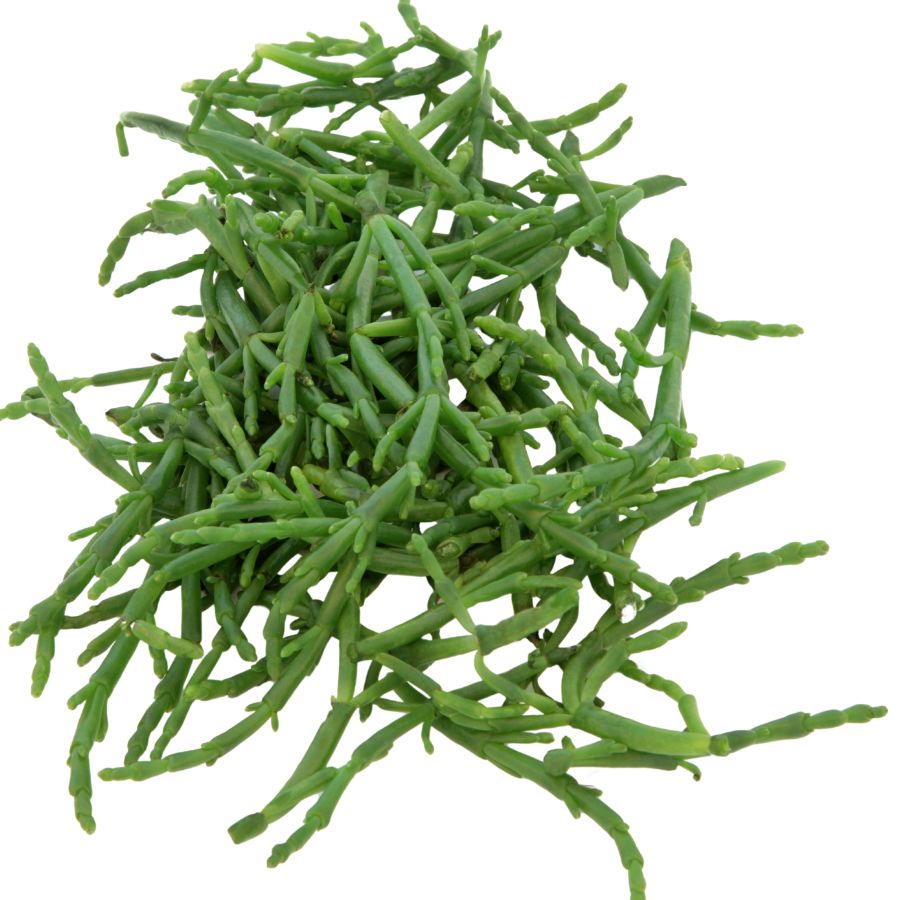
Samphire grows in coastal salt marshes as small, jointed green stalks that look like tiny cacti without spines. It has a satisfying crunch and tastes naturally salty, like the ocean.
The bright green stems are what you eat, and they’re best when young and tender. Stay away from plants growing in dirty waters since they can soak up harmful substances.
You can easily spot samphire by its segmented structure and where it grows. Not many plants look like it, though glasswort is related and also safe to eat.
People who gather wild foods value samphire because it already tastes salty and needs little seasoning. It goes great with seafood and can be eaten raw in salads or lightly cooked as a side dish.
Fiddlehead Ferns (Matteuccia struthiopteris)
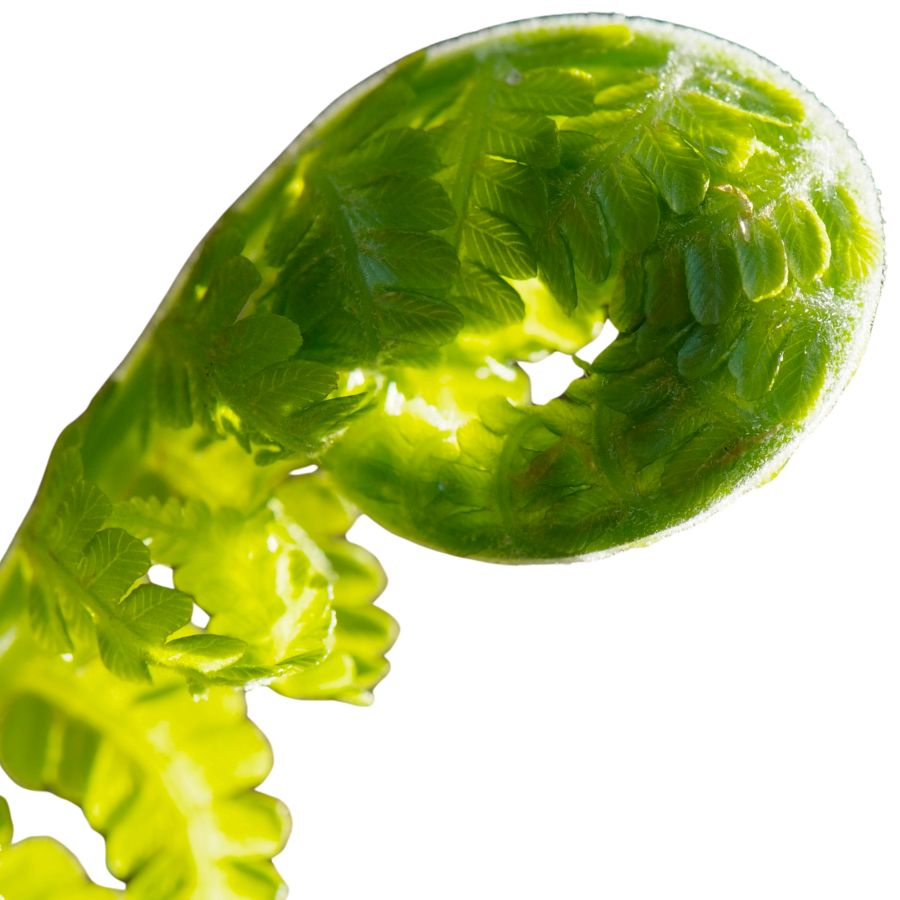
The young fronds of ostrich ferns curl up tightly, looking like the end of a violin. These bright green spirals grow from round clusters and have papery brown coverings.
You must clean fiddleheads well to remove the brown paper-like coating before cooking. Never eat them raw – cooking them properly is important to make them safe for your stomach.
Fiddleheads taste somewhat like a mix of asparagus and spinach when cooked right. Fancy restaurants often serve them during their short growing season.
Only pick fiddleheads from ostrich ferns, as some other fern types can make you sick. The safe kind has a groove on the inside of the stem that looks like the letter U, similar to celery.
Beach Plums (Prunus maritima)
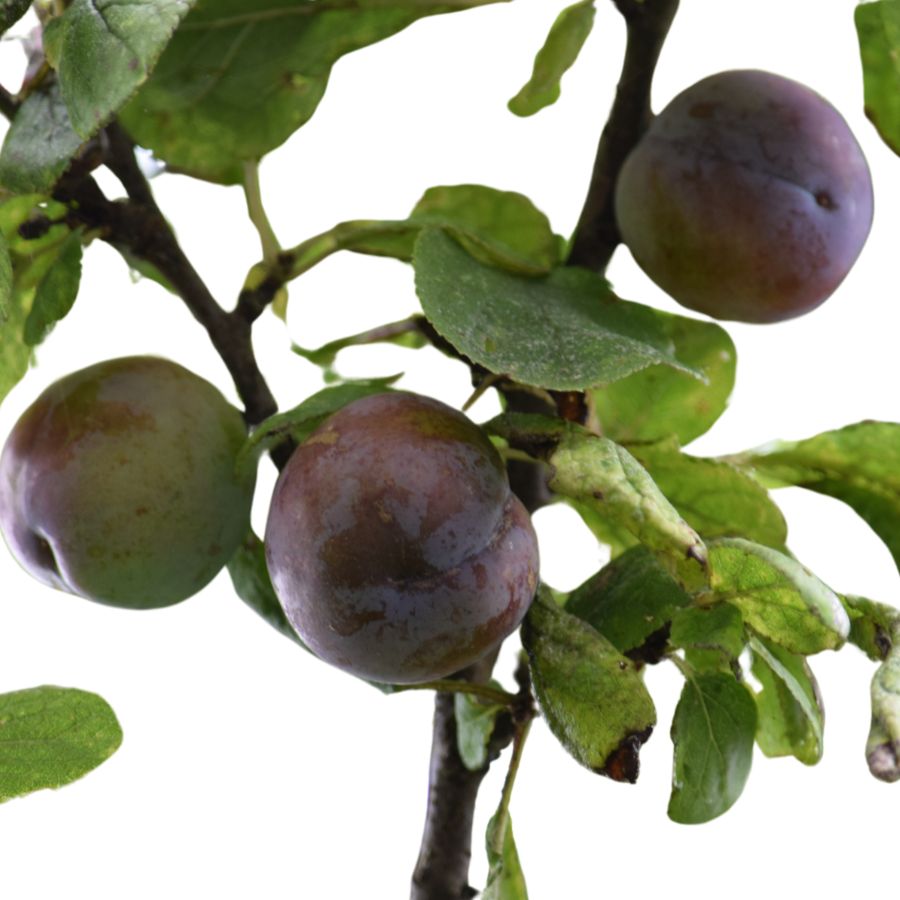
The small, round fruits of beach plums turn dark purple when ripe. They grow on thorny bushes with oval leaves that can handle sandy soil where other fruit trees struggle.
The entire fruit except the pit is good to eat, though most people cook them because they’re quite sour. They make excellent jams that thicken well without adding extra ingredients.
Beach plums have a strong taste that is both sweet and sour with a hint of almond flavor. This unique taste makes them worth searching for.
When picking beach plums, choose ones that feel slightly soft when pressed. Green fruits aren’t ready and will be too sour to enjoy. Many people use them to make jellies and even special wines.
Oyster Mushrooms (Pleurotus ostreatus)
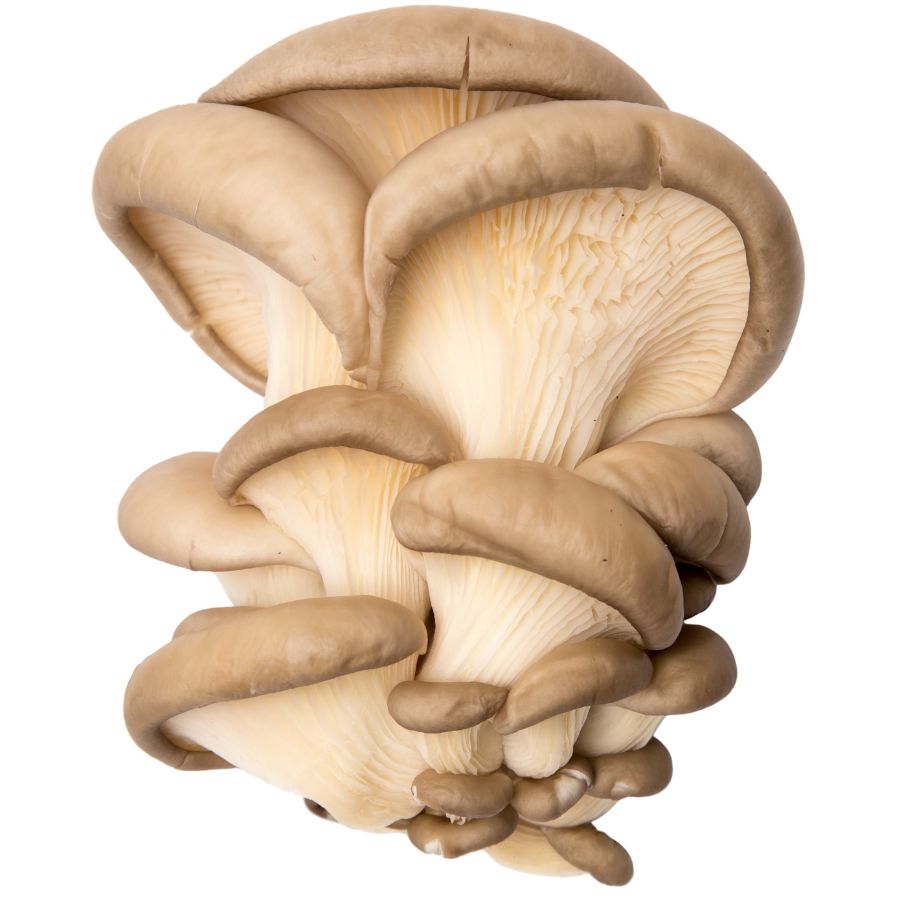
Oyster mushrooms grow in groups on dead trees, spreading out like fans. Their shape looks like oyster shells, which gave them their name. Colors range from white to gray to light brown.
Oyster mushrooms have a mild taste with a slight sweetness. When cooked, they become tender but still have a meaty feel, making them popular in meals without meat.
Beginners can learn to find these mushrooms fairly easily since they have few dangerous look-alikes. When checking if you’ve found oyster mushrooms, look for light colored spore prints and gills that run down the stem.
You can eat all parts of this mushroom, including the stem, although older ones might be tough. They usually appear after rain falls and grow on hardwood trees throughout much of the year.
Wild Cranberries (Vaccinium macrocarpon)
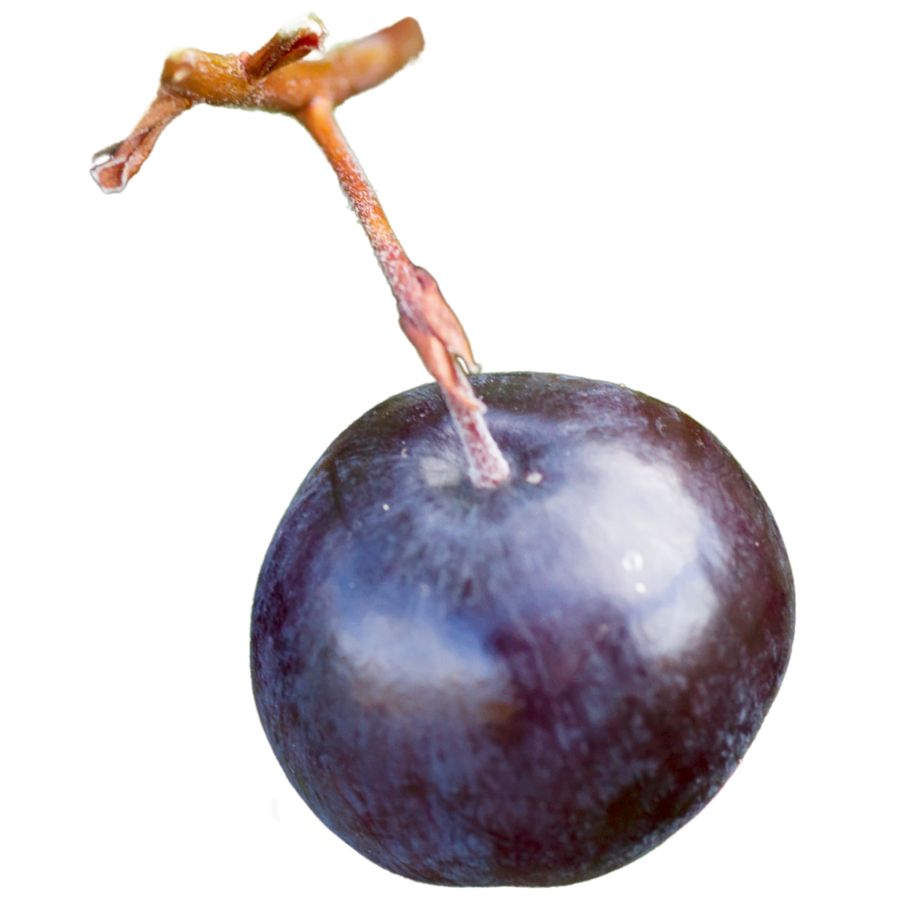
Thin vines with small evergreen leaves cover peat bogs where wild cranberries grow. The bright red berries sometimes float up when water covers the bog.
Native Americans used these tart fruits for food and medicine long before settlers arrived. Wild cranberries contain healthy plant compounds that can help fight illness.
These berries need very specific growing conditions – they only thrive in acidic, wet soil. This makes finding them more challenging but also more rewarding.
Wild cranberries have a stronger, more complex flavor than store-bought ones. They work well in sauces, baked goods, or dried like raisins. When gathering them, pick firm berries and leave some behind so plants can grow back next year.
Shagbark Hickory Nuts (Carya ovata)
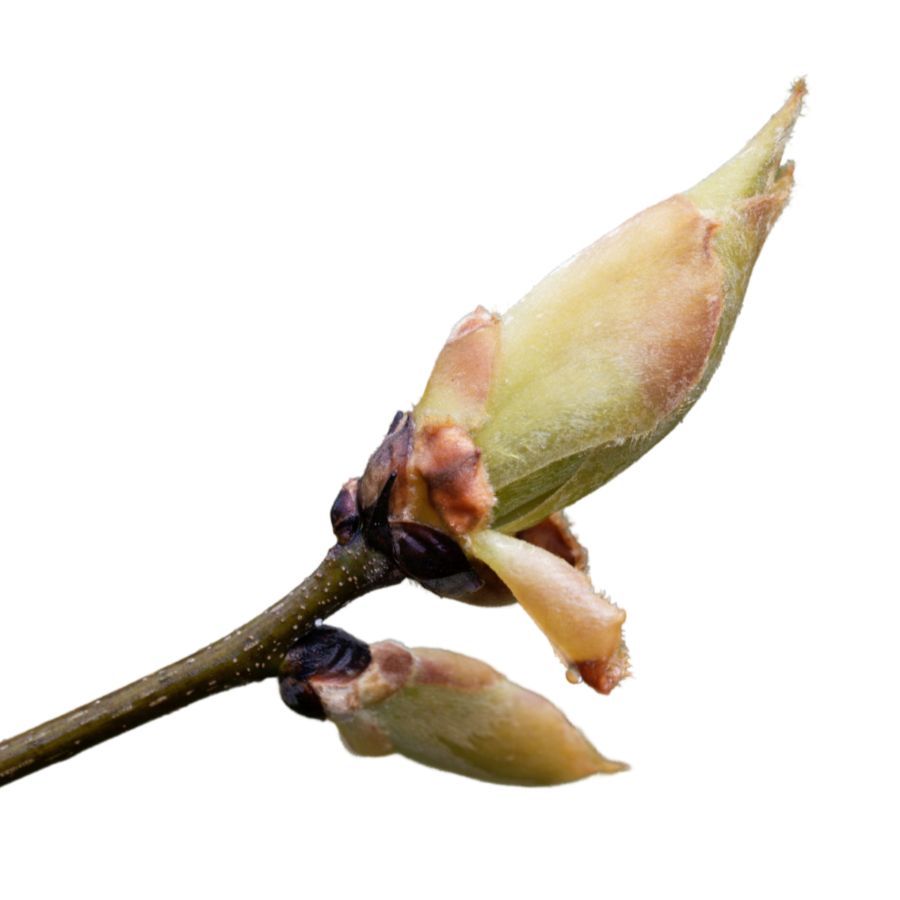
The distinctive peeling bark of shagbark hickory trees looks like someone hung strips of paper from the trunk. These eastern woodland giants produce some of the most flavorful wild nuts available to foragers. The nuts fall inside thick green husks that split open when ripe in autumn.
Once you gather the nuts, they need time to cure for a few weeks. The hard shells require serious effort to crack, but the reward inside is worth it. The sweet, buttery nutmeat tastes richer than any store-bought nut.
Indigenous people valued these nuts as a winter food source high in fats and protein. They crushed the shells and boiled them to make a drink called pawcohiccora.
When foraging, collect only fallen nuts and leave plenty for the squirrels, deer, and other wildlife that depend on them. The wood is also prized for smoking meats and making tool handles.
Glasswort (Salicornia virginica)
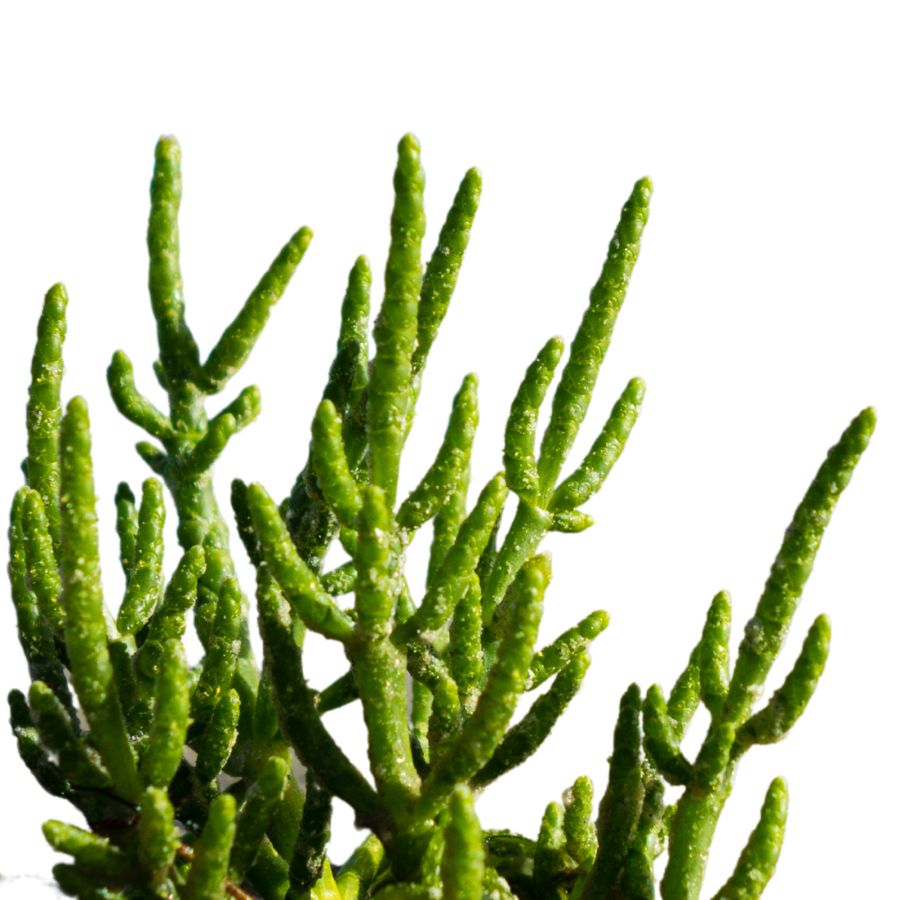
Walking through a coastal salt marsh, you might notice small, jointed green plants that look like tiny cactus fingers poking up from the mud. This unusual plant is glasswort, a salt-loving coastal vegetable that tastes naturally seasoned by the sea. When bitten, it releases a pleasant salty crunch.
Glasswort has no true leaves, just succulent segments that grow upward from the base. The plant turns bright red in autumn before dying back for winter. Only the tender top portions are good for eating, while the lower parts become woody.
This coastal treat has gained popularity in restaurants where chefs serve it lightly steamed or raw in salads. It contains many minerals from its marine environment. Foragers should gather it from clean waters away from pollution sources.
The plant is easy to identify with no dangerous lookalikes, making it perfect for beginners interested in coastal foraging.
Wild Blueberries (Vaccinium angustifolium)
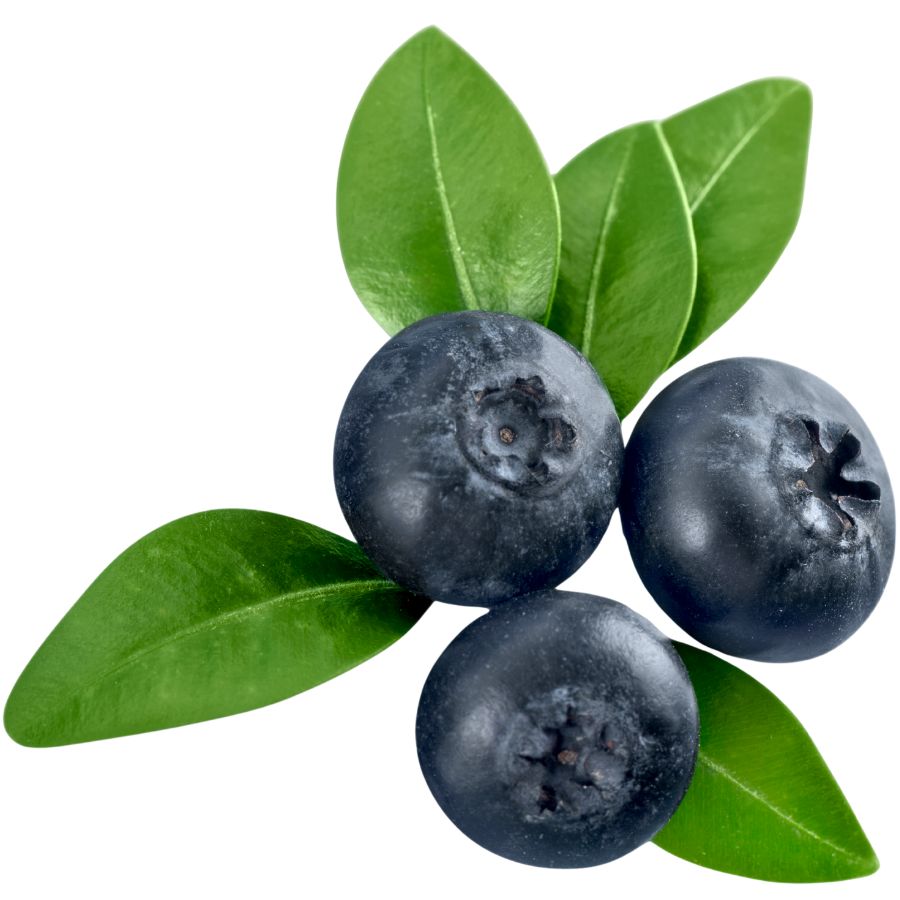
Tiny wild blueberries might require more picking time than their cultivated cousins, but their intense flavor makes the effort worthwhile. These natural berry patches grow on low bushes that spread across rocky hillsides and forest clearings throughout northeastern North America.
The berries grow in clusters, each one smaller than a garden pea but packed with sweet-tart flavor. Their deep blue color comes from powerful plant compounds that offer health benefits. The waxy coating on each berry helps protect them from insects and moisture loss.
For the best picking, look for sunny areas where the bushes grow thick and low. Wild blueberries freeze extremely well without losing their flavor or texture.
Unlike garden varieties, these wild berries have adapted to harsh conditions without any human help. They survive winter temperatures far below zero and thrive in poor, acidic soil where few other plants can grow.
Chicken of the Woods (Laetiporus sulphureus)
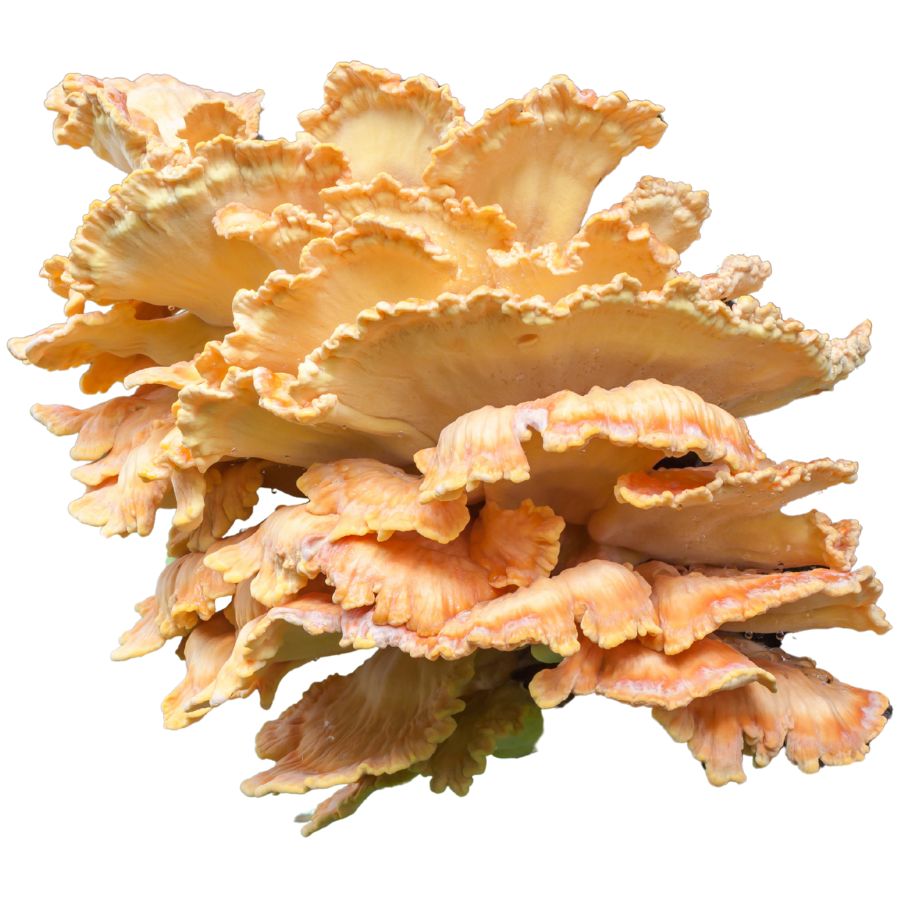
Spotting the bright orange or yellow shelves of the Chicken of the Woods mushroom on a tree trunk feels like finding treasure in the forest. This standout mushroom can’t be missed with its vibrant color that seems to glow among the browns and greens of the woods. Some specimens grow large enough to provide several pounds of food from a single find.
The mushroom grows in overlapping brackets on living or dead trees. Young specimens have a soft texture that becomes firmer with age. Cut into the flesh and you’ll find it has a solid white interior with no gills.
Cook this mushroom thoroughly before eating, as raw consumption can cause stomach upset. The name comes from its flavor and texture, which many people compare to chicken meat.
Chicken of the Woods growing on oak trees is generally preferred, as those on some other tree species may cause digestive problems for certain people. Look for fresh, bug-free specimens with bright colors for the best eating.
Sassafras (Sassafras albidum)
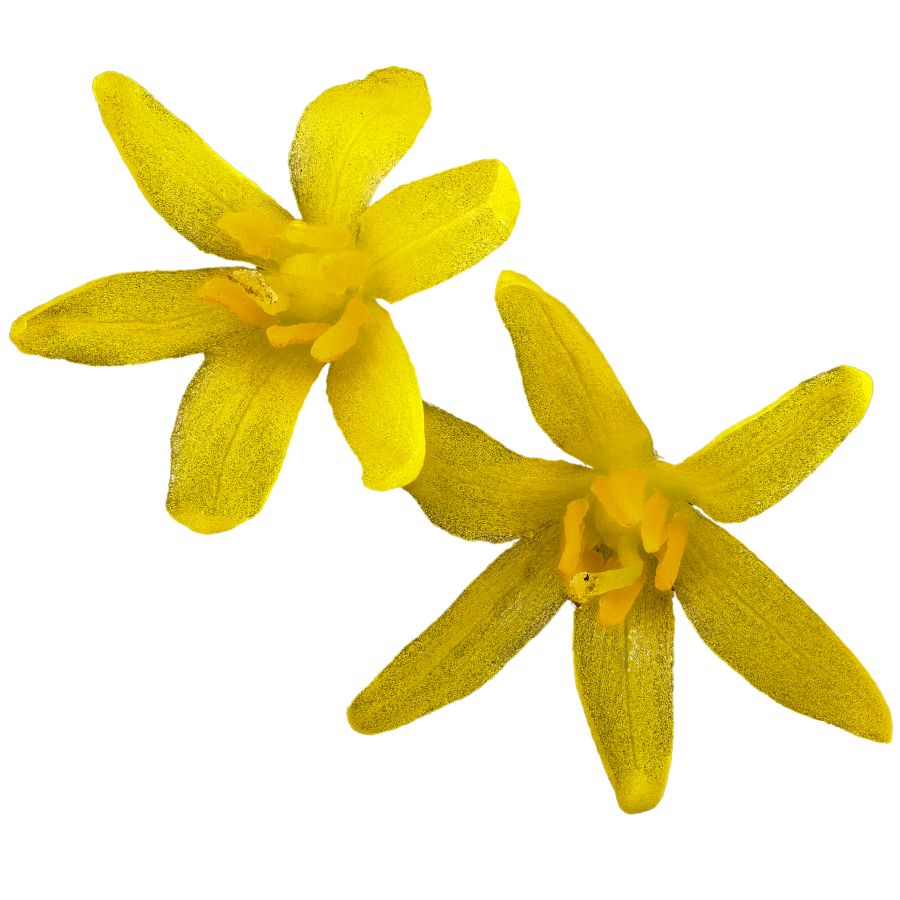
Sassafras is a small deciduous tree with bright green leaves that feel slightly mucilaginous when crushed. You can eat the young leaves raw or dried, and they develop a unique flavor—lightly citrusy, with a smooth texture when chewed.
People use the ground leaves as a thickener in soups and stews, especially in southern recipes. The bark and roots have a stronger taste and were historically brewed into teas with a deep, spicy profile.
There’s a caution with sassafras root: it contains safrole, which has been restricted from commercial food use due to safety studies. However, using a small amount occasionally in traditional preparations is still common in home kitchens.
The tree has a sweet, clove-like scent that sets it apart when the leaves or twigs are snapped. Its closest lookalikes lack that scent and don’t have the same combination of leaf shapes on a single branch.
Wild Rose Hips (Rosa rugosa)
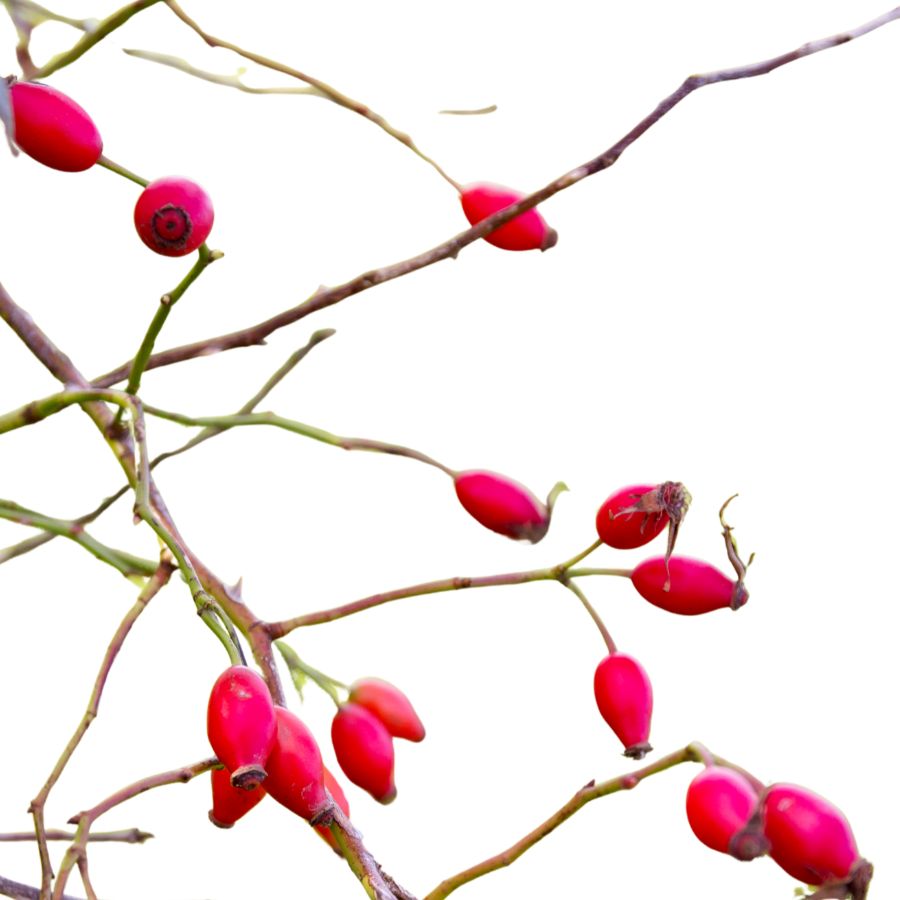
Bright red and round, wild rose hips grow after the flowers of Rosa rugosa fade. These small, apple-like fruits grow on thorny bushes near beaches and in open fields. They taste sweet and a bit sour, like cranberries.
You can spot rose hips by their round shape and tiny bristles at the bottom. They look different from the poisonous bittersweet nightshade berries because rose hips have flower parts still attached at the tip.
You can eat the outer flesh, but remove the seeds and hairy bits inside as they can make your throat itch. Rose hips have more vitamin C than oranges, which helps your immune system.
People use these red fruits to make teas, jams, and syrups. They naturally contain pectin, which helps jams thicken without adding extra ingredients.
Sea Lettuce (Ulva lactuca)
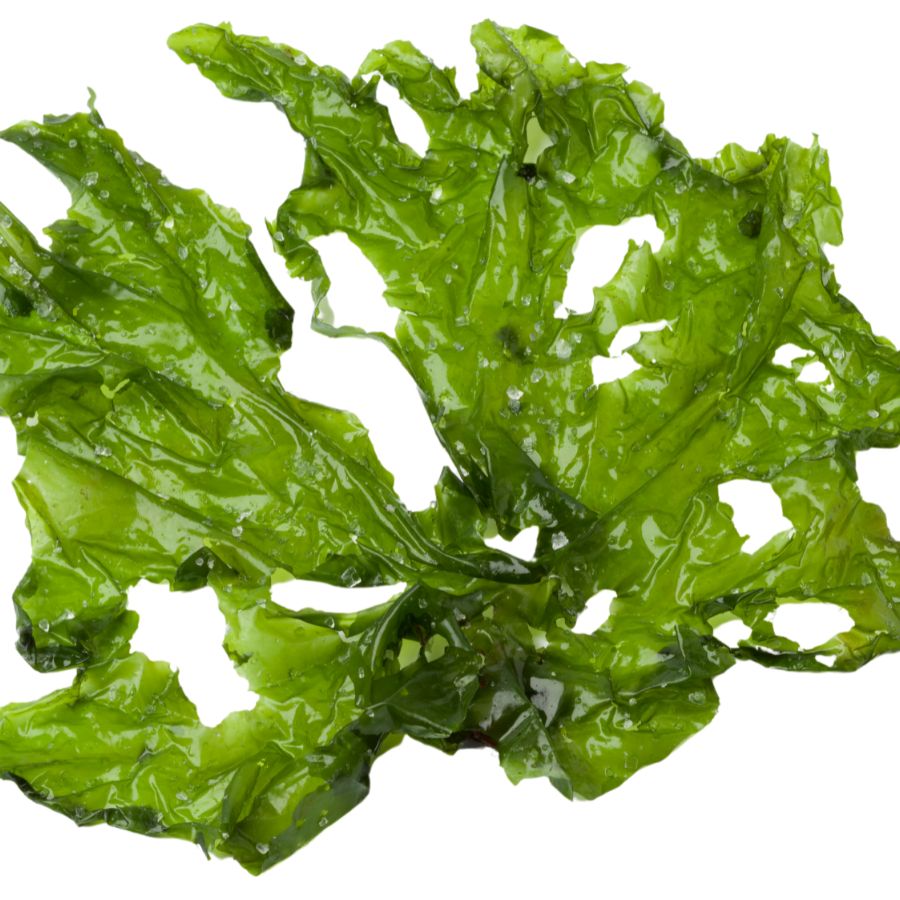
Sea lettuce looks like thin, bright green sheets that move with the water. This seaweed sticks to rocks with a small base and grows where sunlight can reach it. Fresh sea lettuce is crisp and has a mild ocean taste that gets stronger when it dries.
You can eat the whole plant raw or cooked. Sea lettuce is packed with iron, calcium, and vitamins A, B, and C, making it very healthy.
Always collect sea lettuce from clean waters since it soaks up whatever is in the water. Never pick it from dirty areas or right after heavy rain.
You can tell sea lettuce apart from harmful seaweeds by its bright green color and thin, see-through look. People sometimes mix it up with other Ulva types, which you can also eat.
Many people who live near oceans use sea lettuce in soups, salads, and as wraps for other foods.
Wild Sorrel (Rumex acetosella)
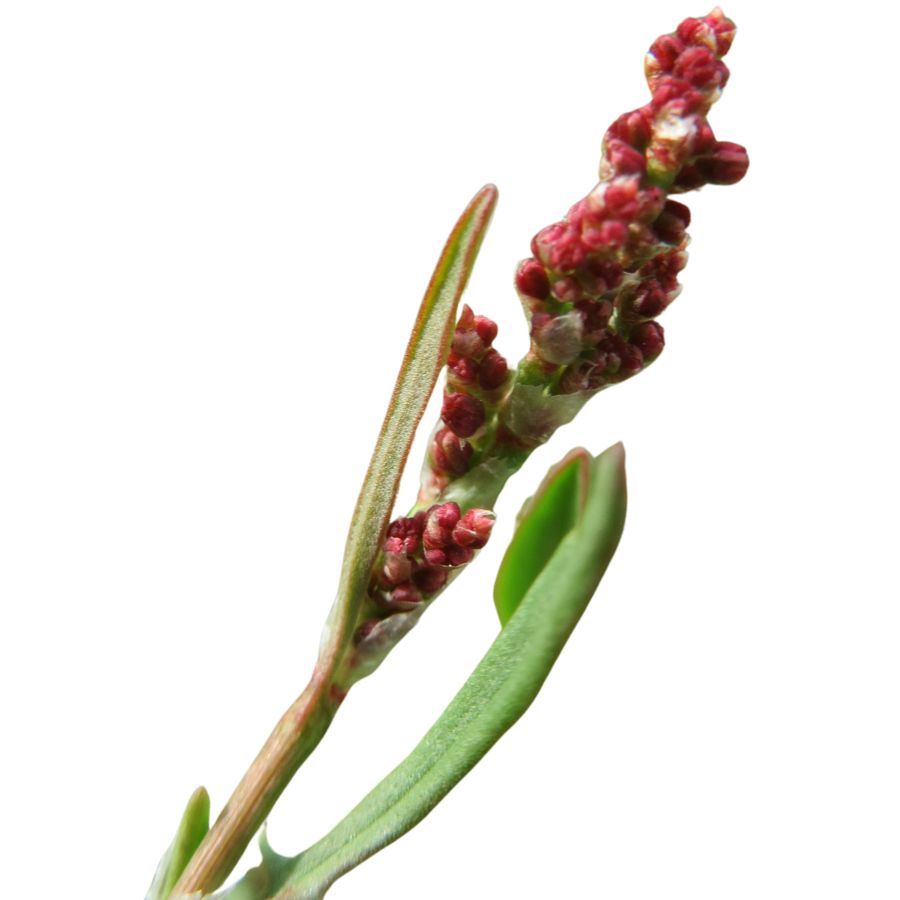
Sorrel has narrow, arrow-shaped leaves with two small lobes at the base and a sharp, lemony flavor that hits immediately when you chew it. You can eat the leaves raw, toss them into soups, or blend them into sauces where their tang brightens up heavy dishes.
The leaves are soft and tender, and the stems are edible too, though they’re a bit more fibrous. Avoid confusing it with related docks like curly dock—those leaves are broader, tougher, and don’t have the same tart bite.
People mostly use sheep sorrel fresh, but it also dries well for tea or powdered seasoning. Its high oxalic acid content means you shouldn’t eat large amounts regularly, especially if you have kidney issues.
Red-tinted veins often run through the green leaves, especially in poor or acidic soils. The roots and flowers aren’t typically eaten, so stick with the leaves and young stems.
Autumn Olive Berries (Elaeagnus umbellata)
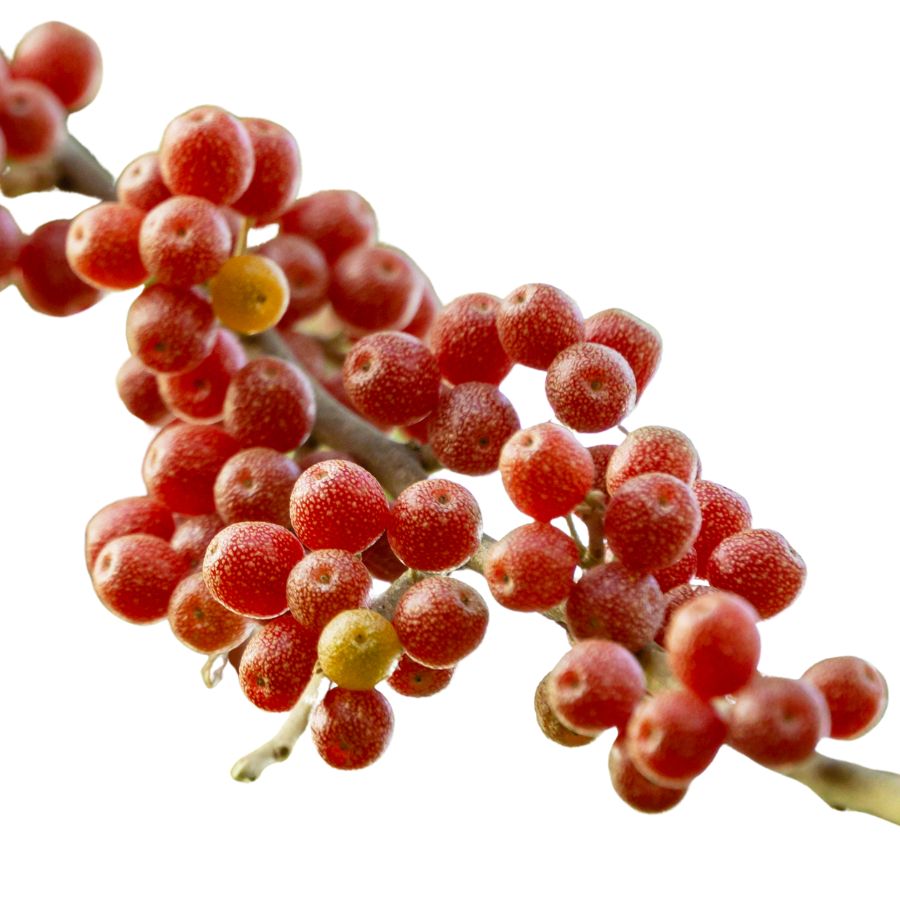
With its silver-dusted leaves and small, speckled red fruits, autumn olive—also called silverberry or Japanese silverberry—has made its way into many thickets and field edges. The fruit is edible, tart, and slick-skinned, with a burst of sourness that mellows in cooked preparations.
People often turn autumn olive into jelly, sauces, or fermented beverages to tame the intense flavor. You can also dehydrate the berries into a powder for use in baked goods.
Some confuse it with Russian olive, which grows similar leaves but bears dry, yellow fruit instead. Stick to harvesting just the berries, as the rest of the plant doesn’t have any culinary use.
What makes autumn olive particularly interesting is its nitrogen-fixing ability, which helps it thrive where other plants struggle—but that same trait is also why it spreads so aggressively. Still, the fruit is safe and edible, and one of the few wild berries with such a high lycopene content.
Chanterelle Mushrooms (Cantharellus cibarius)
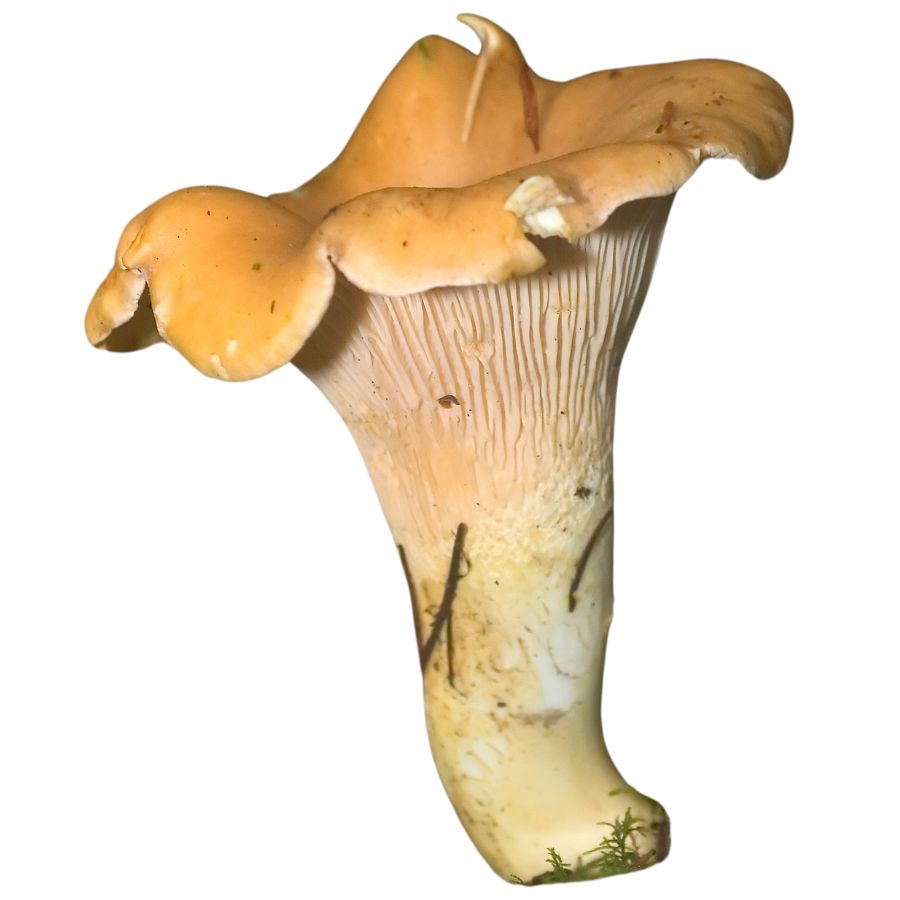
Golden yellow and shaped like trumpets, chanterelle mushrooms pop up from forest floors after rain. These wild mushrooms have ridges that look like wrinkles running down the stem instead of flat gills. Chanterelles smell like apricots, which helps you know you’ve found the right mushroom.
Chanterelles are special because they taste fruity, peppery, and earthy all at once. Chefs love them. You can’t grow them on farms, so they must be found in the wild.
Look for chanterelles in forests with oak, maple, and beech trees. The mushrooms and trees help each other grow. You can eat the whole mushroom.
Be careful not to mix them up with the poisonous jack-o’-lantern mushroom, which has true gills and often grows on wood. False chanterelles also look similar but are darker and have straight gills.
Always be 100% sure before eating any wild mushroom.
Wakame (Alaria esculenta)
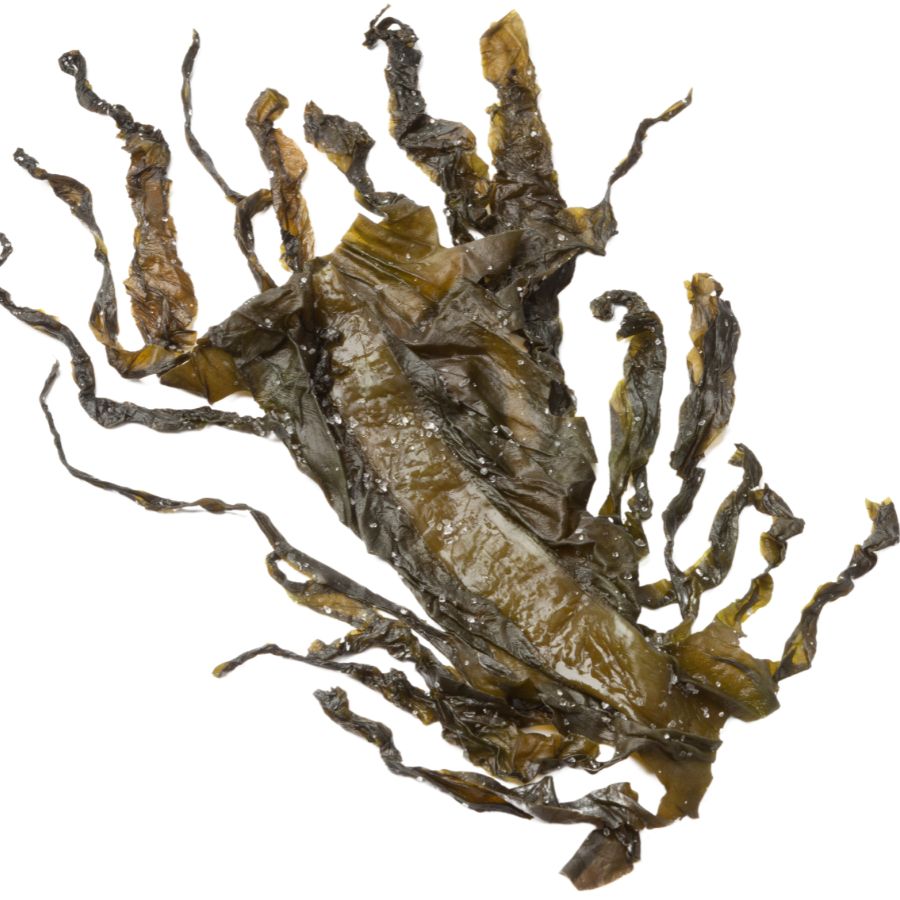
Wakame seaweed has olive-brown, ribbon-like parts that can grow up to six feet long in cold ocean waters. It has a line running down the middle that makes it look like a feather. Wakame grows on rocks underwater, where moving water brings it food.
You can eat all parts except the tough stem. When cooked, wakame gets soft and slightly sweet. It has a rich, savory flavor that makes soups and salads taste better.
You can tell wakame apart from other seaweeds because it has thinner blades and that middle line. It doesn’t have air bubbles or branches like some other seaweeds do.
This seaweed is very healthy. It has a special compound called fucoidan that might help fight cancer. It also has lots of iodine, calcium, and magnesium.
Japanese people have been eating wakame for hundreds of years, mostly in miso soup and seaweed salads.
American Hazelnuts (Corylus americana)
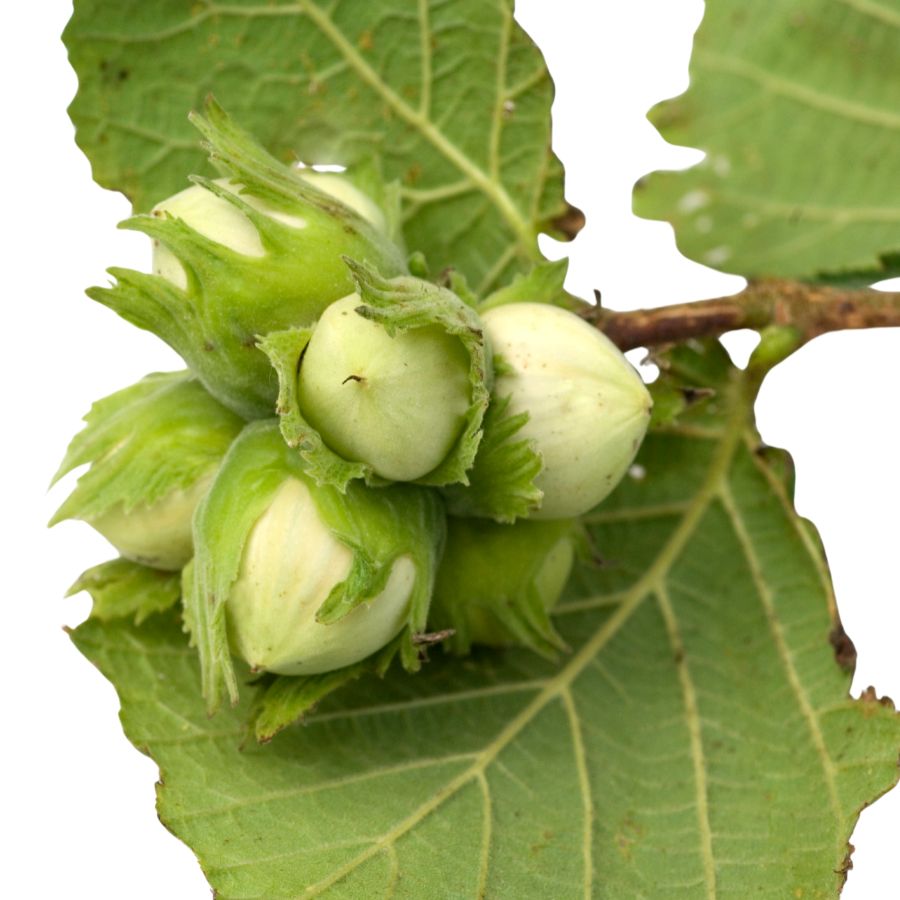
Clusters of round, fringed husks tucked among bushy green leaves usually mean you have found American hazelnut, sometimes called American filbert. It grows as a wide, shrubby plant that spreads along forest edges, open woods, and overgrown fields.
The nuts inside are rich and buttery, with a firm texture that turns creamy when roasted or ground into flour. You can eat them raw, toss them into baked goods, or crush them into a thick, flavorful spread.
It helps to know the difference between American hazelnut and its close cousin, beaked hazelnut, which hides its nut inside a long, pointed husk. Both plants are safe to eat, but the shape of the husk makes it easy to tell which one you have.
Only the inner nut is gathered for food; the leafy husk and hard outer shell are tossed aside. If you leave them too long, local wildlife like squirrels will clear out the patch faster than you can.
Peppergrass (Lepidium virginicum)
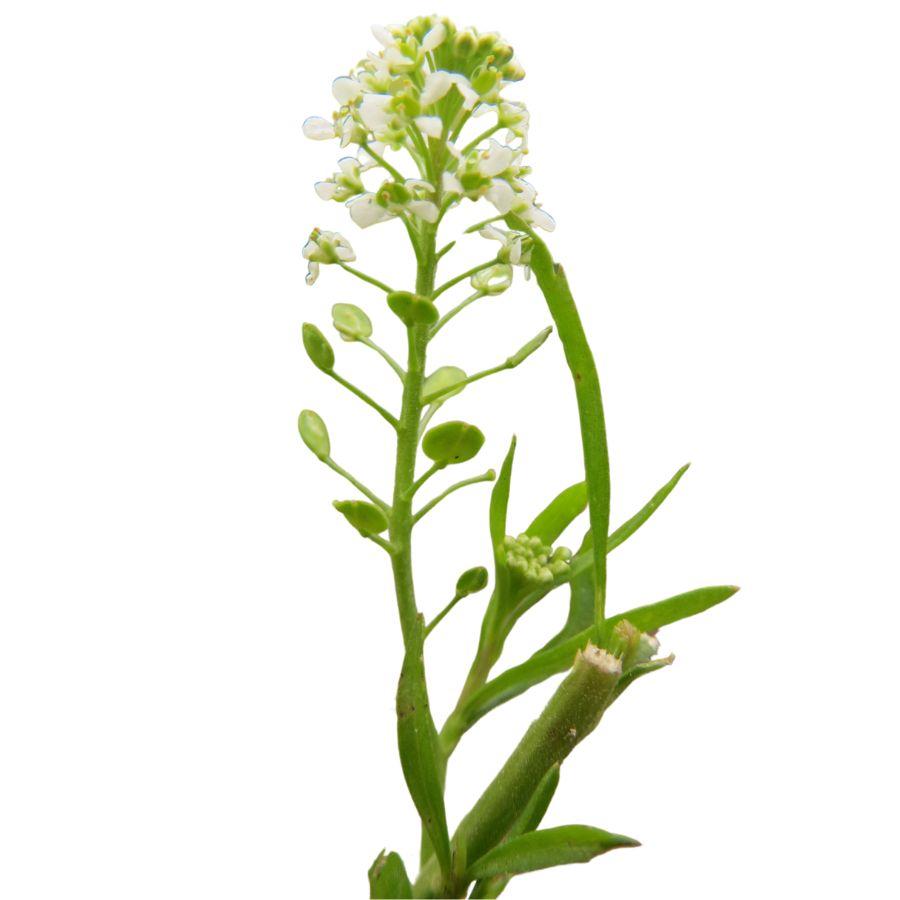
Peppergrass, sometimes called Virginia pepperweed or poor man’s pepper, is a small leafy plant that grows upright with tiny white flowers. The plant’s seed pods are flat, round, and shaped like tiny coins, making them easy to spot once you know what to look for.
You can eat the leaves, young seed pods, and even the flowers of peppergrass. The seed pods are the part most people like to harvest because they have a strong, peppery bite that livens up salads or sandwiches.
Some wild mustards can look a little bit like peppergrass, but their seed pods are usually longer and shaped more like skinny beans. When you are checking the plant, look closely at the flat, disk-shaped pods to make sure you have the right one.
Peppergrass has a spicy flavor that gets sharper as the plant matures, almost like a cross between black pepper and a mild radish. People often use the fresh pods or leaves chopped into salads, or sometimes grind the dried seeds as a seasoning.
Where to Find Valuable Forageables in the State
Some parts of the state are better than others when it comes to finding valuable wild plants and mushrooms. Here are the different places where you’re most likely to have luck:
| Plant | Locations |
|---|---|
| Samphire (Salicornia europaea) | – Ninigret Salt Marsh – Succotash Marsh – Charlestown Breachway |
| Fiddlehead Ferns (Matteuccia struthiopteris) | – Arcadia Management Area – Buckeye Brook area – Big River WMA (Hopkinton) |
| Beach Plums (Prunus maritima) | – Sachuest Point coastal zone – Moonstone Beach dunes – Beavertail State shoreline |
| Oyster Mushrooms (Pleurotus ostreatus) | – Durfee Hill WMA – Tillinghast Pond Preserve – George B. Parker Woodland |
| Wild Cranberries (Vaccinium macrocarpon) | – Kenyon Swamp (Richmond) – Worden Pond wetland edge – Great Swamp Management Area |
| Shagbark Hickory Nuts (Carya ovata) | – Exeter Town Forest – Lawton Farm (Scituate) – Pulaski State Park woodland edge |
| Glasswort (Salicornia virginica) | – Wickford Cove salt flats – Pettaquamscutt Cove – Bissel Cove marshes |
| Wild Blueberries (Vaccinium angustifolium) | – Pocasset Ridge Conservation Area – Beach Pond Forest (Exeter) – North-South Trail (West Greenwich) |
| Chicken of the Woods (Laetiporus sulphureus) | – Nicholas Farm Management Area – Foster Land Trust Trails – Fisherville Brook Wildlife Refuge |
| Sassafras (Sassafras albidum) | – Hopkins Hollow Preserve – Kenyon Crossroads woods – Yawgoo Valley trails |
| Wild Rose Hips (Rosa rugosa) | – Brenton Point hedgerows – Fort Wetherill cliffs – Frosty Hollow coastal brush |
| Sea Lettuce (Ulva lactuca) | – East Matunuck tidal zone – Narragansett Bay shallows – Quonochontaug Breachway |
| Wild Sorrel (Rumex acetosella) | – Rome Point meadow – Durham Hill Wildlife Area – Yawl Meadow (Burrillville) |
| Autumn Olive Berries (Elaeagnus umbellata) | – Browning Mill Pond area – Corn Neck Road fields (Block Island) – Pasquiset Pond edge |
| Chanterelle Mushrooms (Cantharellus cibarius) | – Deep Pond uplands – Cliff Vanover Trail (Coventry) – Yawgoo Pond slopes |
| Wakame (Alaria esculenta) | – Sakonnet Point rocky shallows – Fort Getty intertidal zone – Point Judith tidal pools |
| American Hazelnuts (Corylus americana) | – Woonasquatucket River Greenway – Steere Hill trails – Briggs Marsh uplands |
| Peppergrass (Lepidium virginicum) | – Colt State Park fields – Hoxsie Swamp (Warwick) – Benny’s Pond margin (South Kingstown) |
When to Forage for Maximum Value
Every valuable wild plant or mushroom has its season. Here’s a look at the best times for harvest:
| Plants | Valuable Parts | Best Harvest Season |
|---|---|---|
| Samphire (Salicornia europaea) | Young stems | June – August |
| Fiddlehead ferns (Matteuccia struthiopteris) | Coiled young fronds | April – May |
| Beach plums (Prunus maritima) | Ripe fruits | August – September |
| Oyster mushrooms (Pleurotus ostreatus) | Fruiting bodies | April – June, September – November |
| Wild cranberries (Vaccinium macrocarpon) | Ripe berries | September – November |
| Shagbark hickory nuts (Carya ovata) | Nuts | September – October |
| Glasswort (Salicornia virginica) | Tender shoots | July – September |
| Wild blueberries (Vaccinium angustifolium) | Ripe berries | July – August |
| Chicken of the woods (Laetiporus sulphureus) | Fruiting bodies | May – September |
| Sassafras (Sassafras albidum) | Young leaves (spring), roots (fall) | April – May (leaves), September – October (roots) |
| Wild rose hips (Rosa rugosa) | Ripe hips | September – November |
| Sea lettuce (Ulva lactuca) | Fronds | May – August |
| Wild sorrel (Rumex acetosella) | Tender leaves | April – June |
| Autumn olive berries (Elaeagnus umbellata) | Ripe berries | September – October |
| Chanterelle mushrooms (Cantharellus cibarius) | Fruiting bodies | July – September |
| Wakame (Alaria esculenta) | Fronds | April – June |
| American hazelnuts (Corylus americana) | Nuts | August – September |
| Peppergrass (Lepidium virginicum) | Young leaves, seed pods | May – July (leaves), July – August (seed pods) |
One Final Disclaimer
The information provided in this article is for general informational and educational purposes only. Foraging for wild plants and mushrooms involves inherent risks. Some wild plants and mushrooms are toxic and can be easily mistaken for edible varieties.
Before ingesting anything, it should be identified with 100% certainty as edible by someone qualified and experienced in mushroom and plant identification, such as a professional mycologist or an expert forager. Misidentification can lead to serious illness or death.
All mushrooms and plants have the potential to cause severe adverse reactions in certain individuals, even death. If you are consuming foraged items, it is crucial to cook them thoroughly and properly and only eat a small portion to test for personal tolerance. Some people may have allergies or sensitivities to specific mushrooms and plants, even if they are considered safe for others.
Foraged items should always be fully cooked with proper instructions to ensure they are safe to eat. Many wild mushrooms and plants contain toxins and compounds that can be harmful if ingested.

